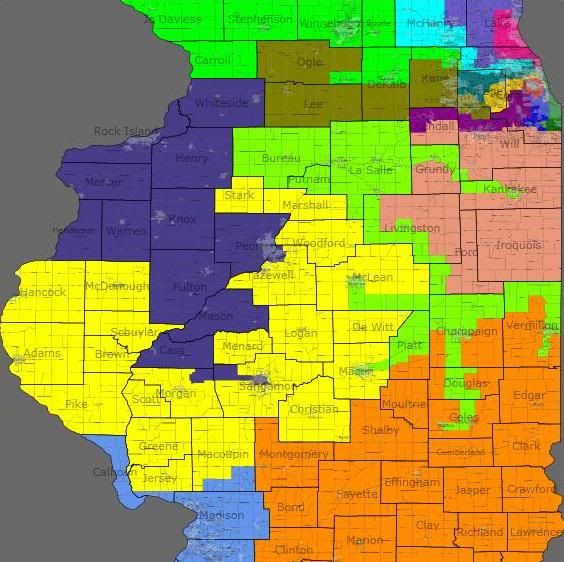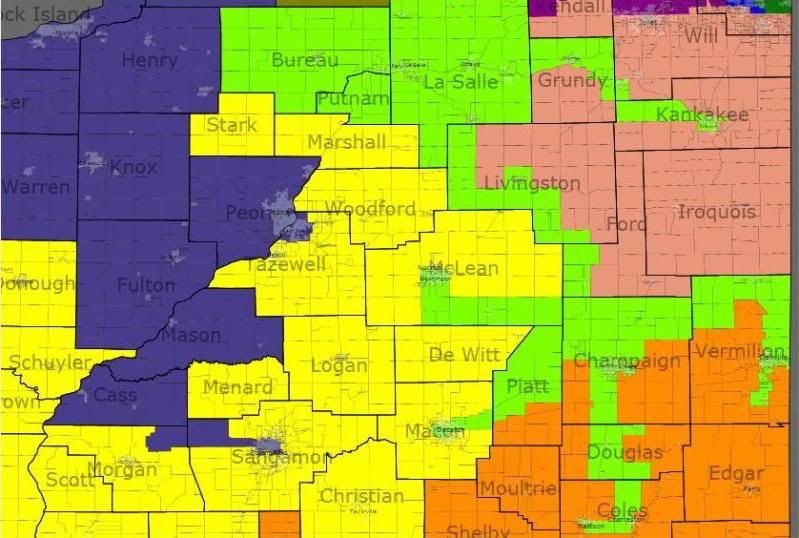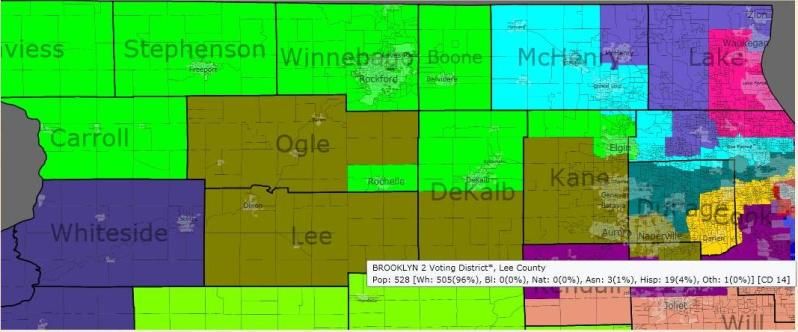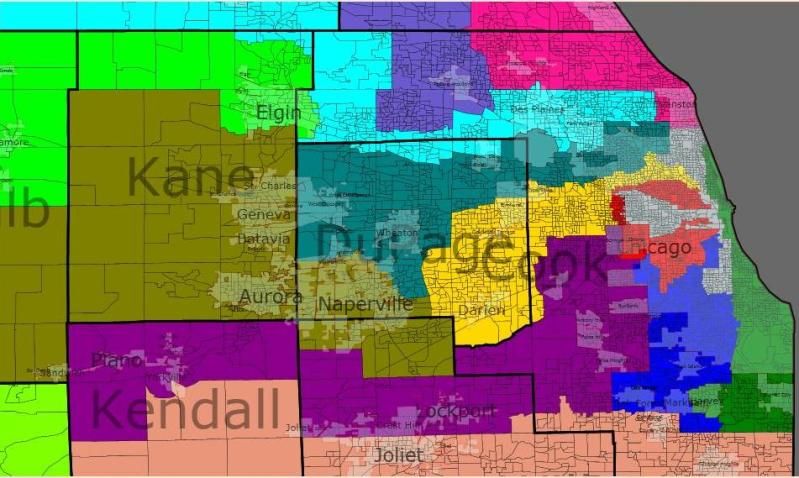• AK-Sen: As it gets more and more apparent that victory isn’t going to come on the write-in-challenges front, the Joe Miller camp seems to be admitting as much. However, they aren’t preparing to concede, as they see one last ace in the hole: absentee ballots, which are still trickling in. The last to arrive (ahead of Wednesday’s deadline) will be the military overseas ballots, which Miller expects will break heavily in his favor (seeing as how many military members nearing the end of their commitment are probably looking forward to a profitable career on Miller’s paramilitary goon squad). With Lisa Murkowski’s lead holding at 40-35, though, it’s unclear whether military ballots would show up in sufficient numbers to turn the tide even if they broke widely for Miller.
• DE-Sen, WV-Sen: Congratulations today to Chris Coons and Joe Manchin, both of whom are being sworn into the Senate this afternoon for the lame-duck session. It’s also the first day on the job for Earl Ray Tomblin, who becomes the new West Virginia Governor in Manchin’s absence. If you’re wondering about Mark Kirk, he’ll be sworn in next week thanks to vagaries of Illinois law. (If I may be allowed a brief moment of alma mater pride, Coons appears to be the first Amherst alum elected to the Senate since the ill-fated Thomas Eagleton.)
• MA-Sen: You may remember a boomlet that peaked last week for Senate speculation concerning Setti Warren, the “rock star” mayor of Newton. Well, that’s over, as he’s now saying his “intent” is to finish his term, which runs through 2013. However, a different young up-and-coming mayor of one of the Bay State’s larger cities is now poking the Senate race with a stick: Will Flanagan, the 30-year-old mayor of the much more blue-collar Fall River, is gauging the race.
• TX-Sen: The Fix has a look at possible primary challengers to Kay Bailey Hutchison, who, with her bungled gubernatorial run and her TARP vote, seems to have painted a big target on her back aimed at Texas tea partiers looking for a promotion. Former SoS Roger Williams and former Railroad Commissioner Elizabeth Ames Jones are already in the race (dating back to when it was expected that KBH would be on her way to the Governor’s Mansion at this point), but the bigger names to watch are Lt. Gov. David Dewhurst and Railroad Commissioner Michael Williams. Dewhurst is establishment but has the personal wealth to get a foothold here, while Williams has no money but is the favorite of the tea party set. Dallas mayor Tom Leppert is also mentioned as a wild-card. One Dem who won’t be making the race is former Houston mayor Bill White, who in wake of his gubernatorial loss says he won’t pivot to a Senate race. That probably frees up the Dem Senate slot for former comptroller John Sharp, who was going to run in the hypothetical special election that never happened and already has a big stack of cash saved up for the race.
• CT-Gov: If you’re hearing zombie lies from Republican friends about the Connecticut gubernatorial race being stolen by the urban machines, here’s a handy debunking point: exit polls show that the huge falloff in votes in Bridgeport neatly tracks the statewide falloff in Dem crossover votes for the Republican candidate in general from 2006 (when the broadly-popular Jodi Rell ran) to 2010.
• KY-Gov: One more Republican to keep in mind as a potential challenger in next year’s off-year gubernatorial election: Jefferson County Clerk Bobbie Holsclaw. That’s kind of a big step up to Governor, so it seems like she might be starting with a high negotiating position with the party to try to worm her way into the SoS slot instead (assuming Trey Grayson follows through on plans to run for AG instead).
• NC-02, TX-27: Here are updates on two of our outstanding races: recounts have been officially approved in both of ’em. Six counties in the 27th will be recounted, per Solomon Ortiz’s request, as he trails by about 800. In the 2nd, the canvass was officially certified with Bobby Etheridge trailing by 1,489, but he’ll be pursuing a recount as allowed under state law. While neither of these prospects looks that hopeful, we can take some solace in that the likely victors, Blake Farenthold and Renee Elmers, are some of the most amateur-hour entrants into the new House and hopefully likely to help define the new face of the Republican Party.
• NY-29: Best wishes for a quick recovery to soon-to-be-sworn-in Tom Reed, who literally just arrived in Washington and was immediately sickened by it. He was diagnosed with a blood clot in his lungs and says he’ll be released in one or two days, ready to get to work.
• WA-01, WA-03: I’d hoped that Brian Baird was going to take his unique variety of douchiness to the private sector for good, but it looks like his strange retirement decision may have been an inspired case of district-shopping instead. He’s moving to Edmonds in Seattle’s northern suburbs, which just happens to be in the 1st District. Assuming that Jay Inslee follows through on his widely-known plans to run for Governor, lo and behold, the 1st will be an open seat in 2012. The 1st (which is a pretty safe district in its current configuration, and will probably keep similar lines in redistricting) has to be more appealing than the 3rd, which redistricting will probably move from a true swing district to a light-red one, as liberal Olympia will probably have to be exchanged for a Columbia Gorge-centered district that’s based in Vancouver but that runs east into conservative Yakima County. (Which, unfortunately, would be tailor-made for Jaime Herrera, who’s Latina but living in the Vancouver burbs, and will make her much harder to dislodge.) For more detail on Washington’s likely 10-district map, see here.
• NY-St. Sen.: Here’s an update on the three races that are holding New York State Senate control in the balance. Dem incumbent Craig Johnson trails by only 427, and seems to be gaining at a rapid clip as absentee votes get counted, so the trajectory indicates he might pull ahead by the end. Things seem more locked in with two more Dem incumbents, though: Suzi Oppenheimer leads by 504, while Antoine Thompson trails by 597. Wins by Johnson and Oppenheimer would set up a 31-31 tie.
• Chicago mayor: The election’s been over for two weeks, and it’s already time for the first new edition of SSP TV: Rahm Emanuel kicked off his mayoral bid with his first TV spot already. Rep. Danny Davis also made it official this weekend, launching his bid and dubbing himself the “grassroots” candidate. (He looks like he’ll be giving up his House seat only in the event that he wins the mayoral race.)
• DSCC: After some hopeful signs that Michael Bennet might be willing to take on the role of DSCC head, he said “no thanks” late Friday. At this point, Beltway pundits seem to think that the shortest straw has Patty Murray’s name on it.
• RGA: Texas Gov. Rick Perry signed on for another cycle at the helm of the Republican Governor’s Association. I’ve seen speculation that he’s doing it mostly to shut down rumors that he’s really running for President, although it should be a pretty sleepy gubernatorial cycle and he might be able to juggle both tasks (since most big states elect governors during the midterms, and only a few open seats loom… Indiana, North Carolina, and Washington may be the highest-profile races).
• Redistricting: The Wall Street Journal has a good overview of what to expect with redistricting, and they seem to come to the same conclusion that I have: that the downside for the GOP of their strong performance in Dem-held red districts is that it means there are a lot fewer opportunities to turf anyone out through aggressive gerrymandering, and instead their efforts are going to have to more defensive, oriented toward shoring up the deadwood that washed ashore. Meaning, of course, that predictions of another large redistricting-driven gain in the House for the GOP aren’t likely to come to pass, although it will still make it harder for the Dems to regain significant ground.
A couple articles are also out today dealing with the biggest redistricting prize of all, California, although whether it’s a prize or not has much to do with what happens with the newly-created (by Prop 20) congressional redistricting commission; this week, out of the pool of 36,000 applicants, 36 finalists for the commission’s citizen slots will be picked. Of particular interest is what exactly happens with the seats in northern Los Angeles’s San Fernando Valley, where there’s a push underway to get a Hispanic district. (Worth noting: CA-28 already has a Hispanic majority, although Howard Berman seems pretty primary-proof there, and there don’t seem to be enough parts and pieces elsewhere in the Valley to create another neatly-shaped one.)
• Demographics: Here’s a big surprise, on the demographic front: there are reports that there are 100,000 fewer Hispanics in Arizona than there were when SB 1070 passed. That may not have a big impact on voting behavior (since those emigrants are probably unlikely voters), but a big impact on redistricting, where the possibility of a third VRA district in Arizona looms. Or maybe not… since the census only cares where you were on April 1, much of that fleeing may not have happened yet at that point.
• Dave’s App: Exciting news from over in the diaries: version 2.0 of Dave’s Redistricting App is available. You can check out all the details at the link, but two major improvements including use of street maps (making urban work much easier) and ability to save JPGs. Redistricting is going to be one of Swing State Project’s main preoccupations over the next year, and Dave’s App is one of the best tools we have in our arsenal.










